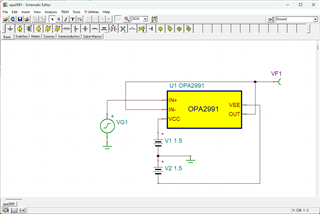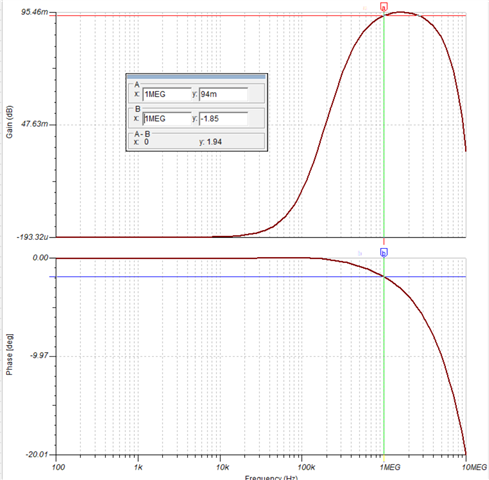Other Parts Discussed in Thread: OPA991, TINA-TI, OPA323
Tool/software:
Hello Analog Experts,
I am new to amplifier circuits and have a question regarding high-speed signal distortion with the OPA991.
Given the OPA991’s gain-bandwidth product of 4.5MHz, I am curious about the maximum frequency of a sine wave signal it can reliably amplify when set up as a simple voltage follower (non-inverting input, gain = 1).
To test this, I conducted an experiment using a signal generator and an oscilloscope with the following setup:
- VDD = 3V, VEE = 0V (single supply)
- Signal biased at 1.5V DC
- Amplitude: 1V peak (2V peak-to-peak)
I tested three different frequencies: 1kHz, 100kHz, and 1MHz. Here are the oscilloscope snapshots for each case: (yellow Being the input, where blue being the output of OPA991)
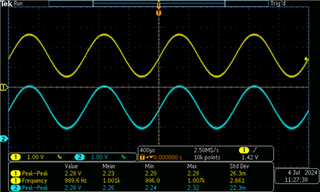
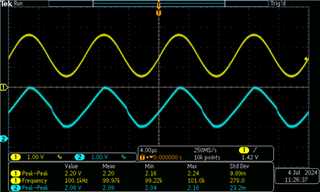
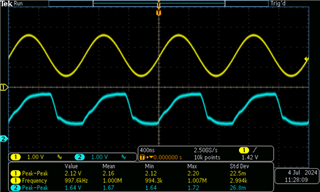
I observed significant distortion at higher frequencies. Is this amount of distortion normal and expected? When I simulated the same setup in TINA-TI using the OPA991 SPICE model, I did not notice any significant distortion.
Thank you for your assistance!


